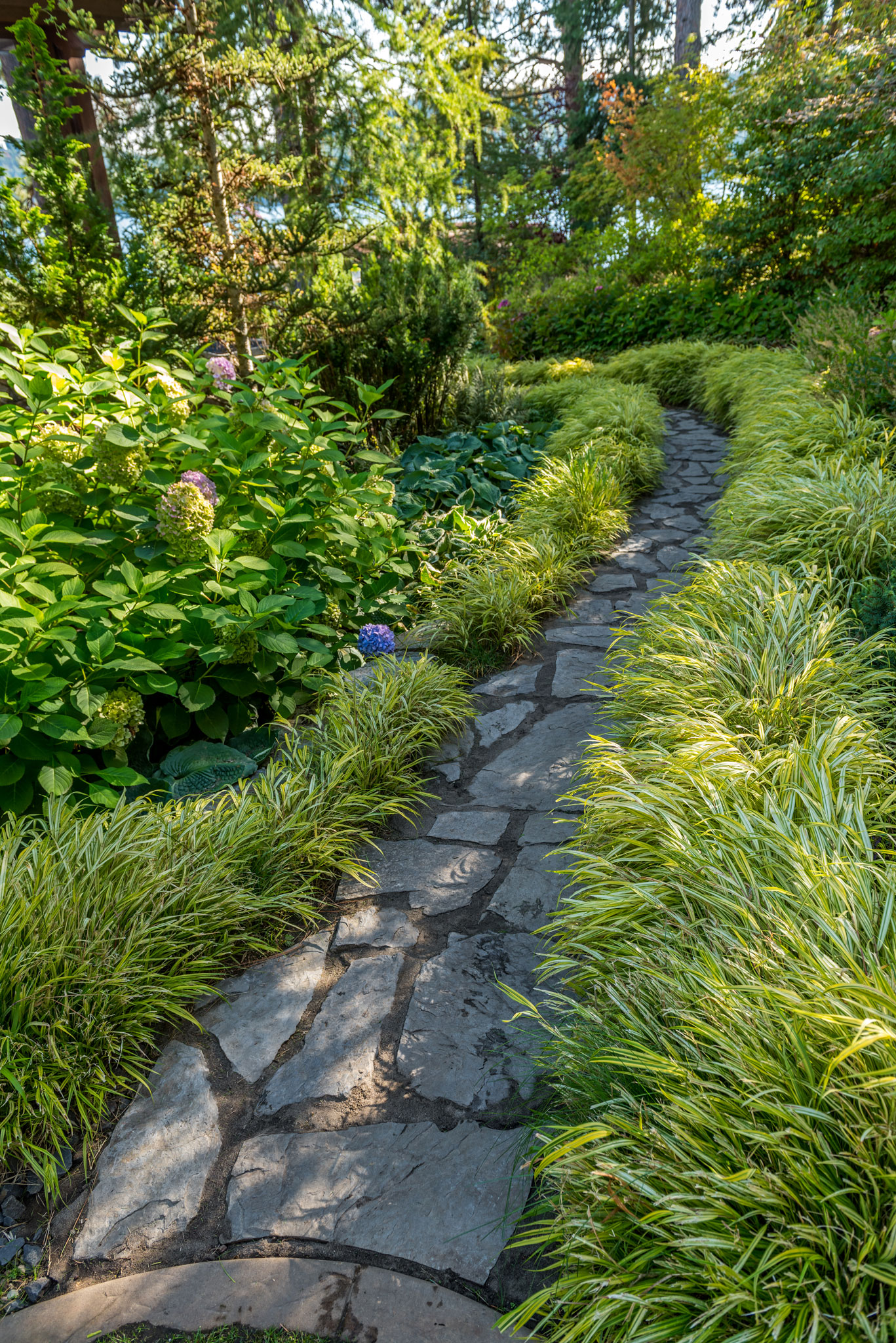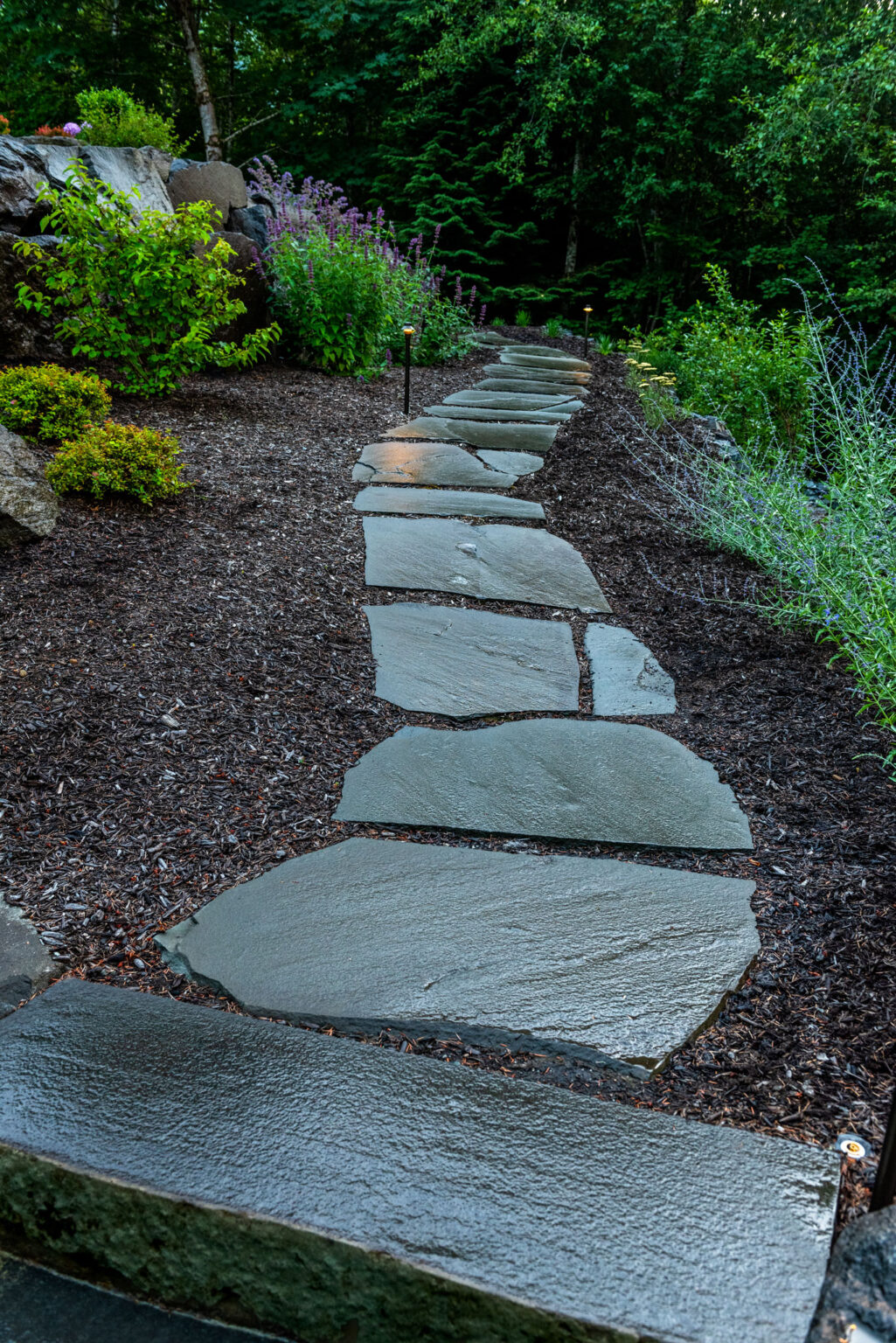Whether you have a garden with three rows of vegetables or a lawn with classic landscaping, creating pathways in and around your garden and yard can bring a wealth of benefits: texture, color, sparkle, weed suppression, easy gardening, soil nutrition, family activities and more. Here are some basic guidelines for choosing and assembling the perfect paths for your property.
» Mulch Paths
Many home gardeners grow in raised beds, box beds or containers, or at least mound up their beds so that they are elevated. The resulting tracts of dirt in between can become compacted over time, get muddy when it rains and kick up dust when it’s dry. It’s very difficult to find reasonably priced straw anymore, or any that hasn’t been heavily sprayed with chemicals. Grass cuttings and newspaper can get slippery, deteriorate quickly and encourage unwanted weeds.
Instead, consider using wood, cocoa bean or seashell mulch. Wood mulch can be chips (chunkier), bark (finer) or sawdust (the finest). Wood is popular because it’s lightweight, composts over time and is inexpensive. Cocoa bean and seashell mulches are by-products of the chocolate and shellfish industries, respectively. So, you’re recycling when you use them! You can also make your own mulch by cutting up end of season healthy vegetable plants as well as tree and shrub trimmings.
Story continues after a quick message from our sponsor below.
» Gravel Paths
Gravel can be pebbles, rolled glass, crushed stone, marble and more. Smooth uniform pebbles can be slippery and difficult to walk on, but placed vertically in a pattern, they can create intricate mosaics among the flowers. Gravel that has uneven textures settles into itself forming a solid walking surface. Using tumbled glass and incorporating marbles into gravel add color and sparkle. Always tamp gravel down and layer with sand to fill in spaces. It’s also wise to add a border to keep it contained. If you frequently shovel snow in the winter, don’t use gravel, as it will quickly travel into your lawn and beds.
» Stone and Brick Paths
River rocks, stepping stone, pieces of shale, bricks, concrete pavers – all are classic path makers in a garden. When placing a stone into a lawn, set it on the grass, cut the shape out with a drywall keyhole saw, remove the sod with a trowel and set the paver into the hole. The stone should sit no more than one inch above ground to keep it out of the mud but allow for mowing.
Stones and bricks can be pieced closely together or farther apart and filled in with concrete, gravel, sand, mulch or even a ground cover, like moss or creeping plants.

» DIY and Upcycled Paths
Planks of old fence wood, untreated wood pallets and logs cut into rounds make beautiful, natural paths. Prepare the hole like you would with bricks but pour in a layer of sand before laying the wood. This will slow wood rot, but you can also coat the wood with a non-toxic sealer.
Get creative with upcycled items! Broken ceramics set in concrete can be a fun project for the whole family (use a cake pan to DIY the perfect size). Glass and plastic bottles can be placed neck-first into the ground and packed together with soil to form a colorful, reflective route. Old grate-covered floor vents can be set into the ground and filled with tumbled glass, marbles, stones, and other colorful, porous materials. Large or small plastic bottle caps can be puzzle-pieced together in colorful patterns for a home recycling project. N
By S. Michal Bennett
Photography By Joel Riner
As Featured In: Summer/Fall 2022



